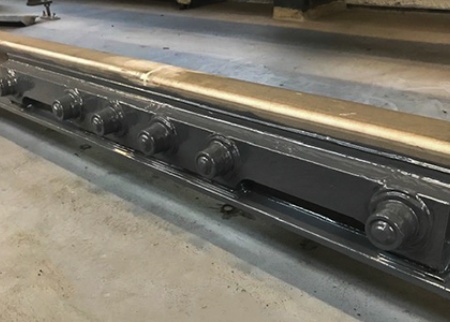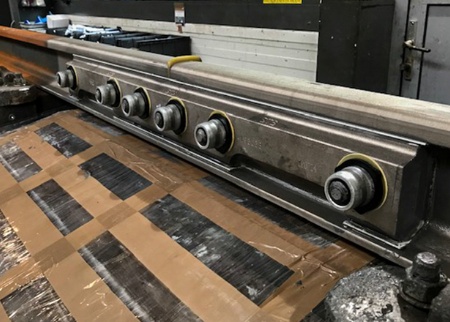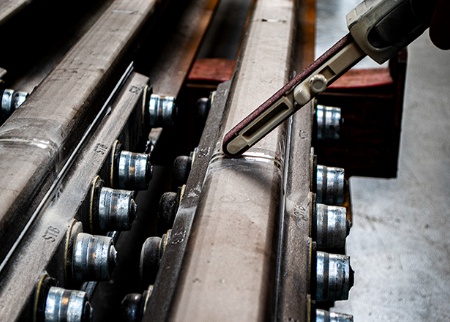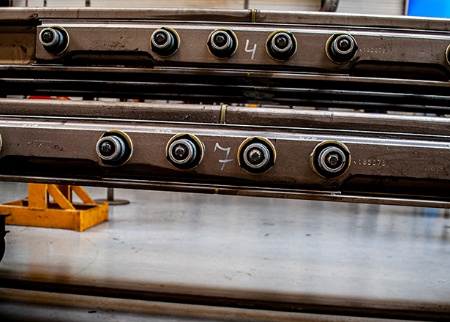Higher level NRG-joints on lower level rails
Installing fitting items in the existing railway tracks is quite a challenging task. This is because the existing rail is more worn-down and therefore lower in height than the new rail. It gets even more complicated when a brand new insulated rail joint needs to be placed in an existing rail. The difference in height is usually solved by heightening the ballast bed underneath the rails, which is a time-consuming job. Unfortunately, this is often not the best solution when it comes to maintaining the quality of the joint. The way the insulated rail joint is fitted in the rail is crucial for its quality and lifespan. Our answer to this challenge? A milled NRG-joint. Recently, the first milled NRG-joint left our Crailoo premises in Hilversum, the Netherlands.



